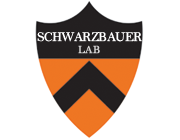Modulation of cell-extracellular matrix interactions.
Type
Changes in extracellular matrix (ECM) structure and composition, such as occur during morphogenesis, can have important regulatory effects on cell behavior. Two fibronectin (FN)-based systems have been developed to dissect how cells respond to different types of ECM. One system mimics the provisional matrix of the wound and is composed of FN cross-linked into a fibrin clot matrix. Unlike cells on FN alone, cells on an FN-fibrin matrix are smaller with cortical distribution of actin filaments and membrane ruffles. Addition of the ECM protein tenascin to the FN-fibrin matrix induces a different cell morphology. Thus, matrix composition can have profound effects on cell phenotype. Cells also interact with FN while assembling it into a fibrillar matrix. Using recombinant FNs, a domain that is required for normal progression of FN fibril formation has been identified. During assembly of this recombinant matrix, formation of actin stress fibers and focal adhesions is delayed, demonstrating that changes in FN matrix structure can affect intracellular organization and activation of signaling pathways.

